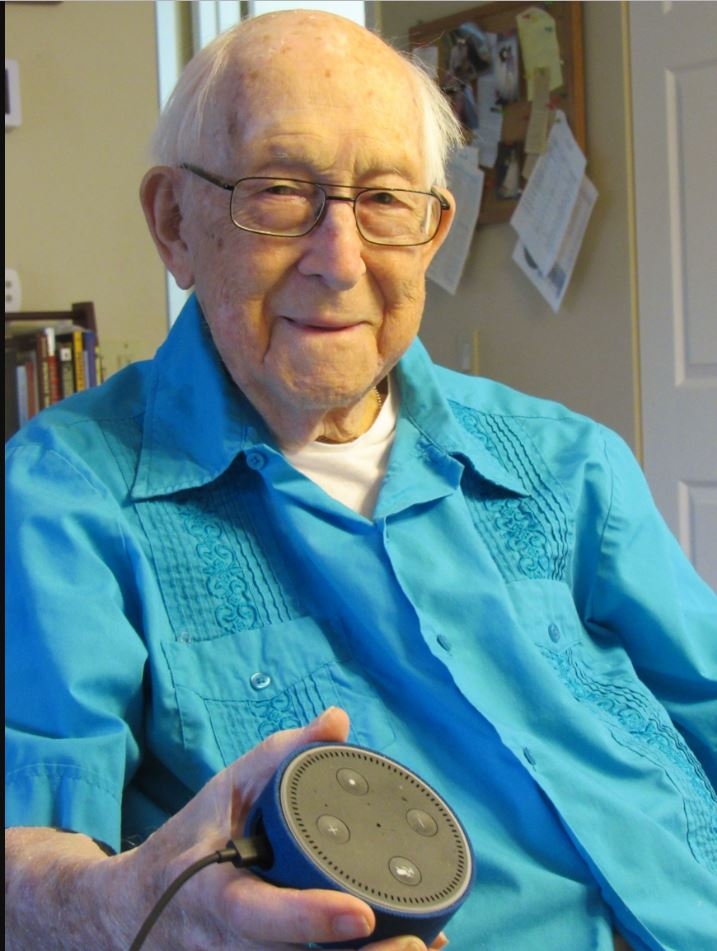The Covid-19 pandemic has made profound changes in how we live. Many adults have had to adjust to working from home. But for school-age children, the change in their lives since schools closed this spring has been even greater. How are they coping with learning from home? The experience of two Eastern Shore counties—Talbot and Kent—suggests that distance learning can work, but that it doesn’t work for some children or even some teachers. The problems include:
The digital divide. Talbot and Kent are fortunate, because in both counties every schoolchild had already been issued a digital device (tablet, chromebook, macbook, depending on age). In both counties the majority of families with school-age children also have internet access at home—even if kids sometimes have to share it with parents working from home.
Interview with Kelly Griffith, Superintendent Talbot County Public Schools
But some children—as many as 15 percent—have no access at home, either because they live in remote locations or because their families can’t afford it. (In both counties, about 50 percent of the students qualify for free or reduced-price lunch.) Others have some access, maybe over a mobile phone, but not enough to stream a live session with a teacher or even to download a big homework file. So for these children, access means traveling to a WiFi hotspot, assuming that the family has a car and a parent at home who can drive them there and wait while the student goes online. Both counties have scrambled to provide more hotspots, working with county IT departments and commercial service providers; and both counties now have WiFi on their school buses, so that they serve as a kind of mobile hotspot. Talbot has also been mailing weekly packets of schoolwork to students who can’t get them any other way.
It’s not just students who lack access—so do some teachers is both counties. It’s a measure of their dedication that those teachers have been driving to school to deliver lessons from an empty classroom or even, in some cases, teaching from their car while parked at a WiFi hotspot.
Teachers are essential. As Bill Poore, Kent County Public School’s IT director says, “Zoom doesn’t replace a teacher’s hands-on help” with reading, or a stubborn arithmetic problem. And while some parents feel comfortable providing that kind of help at home, others do not—especially if it’s been a long time since they confronted an algebra problem or are simply not familiar with the devices and software tools that enable distance learning.
The schools are attempting to help: Kent County has adopted an on-line learning management system that simplifies things for kids or parents, and they have bought all-new devices for every student for the coming year. Talbot focused this past spring on basic topics that could be most easily grasped by a student or a parent without a teacher’s real-time presence (so-called “asynchronous learning”) and is working to have students catchup and finish any incompletes with week-long “boot camps” over the summer. But as Talbot County Public School’s Superintendent Kelly Griffith explains, “synchronous learning is important, because it increases student involvement.”
No one knows yet whether schools will be able to reopen in September, and even if they do, whether parents will feel comfortable sending their children while the pandemic is still active. So Griffith’s goal is to get everyone connected—to close the digital divide, one way or another—and she is seeking state permission for virtual programming. That might mean scheduled sessions with both teacher and students online together: English composition at 9, arithmetic at 10, science at 11.
Making rural broadband—and more effective learning—a policy priority. Last week, governor Larry Hogan announced a $45 million program to address the education digital divide. It includes a plan to build out wireless educational networks in western and southern parts of the state and on the Eastern Shore, using wireless frequencies reserved for educational use or other available frequencies. Hogan’s plan also includes money for devices and software tools, and for innovation grants to help public schools test new online educational strategies. It’s not likely that these new networks will be in place in time to help the coming school year, but it’s nonetheless a worthwhile effort that will eventually help to close the digital divide in rural Maryland.
The broader challenge, however, is to rethink education strategies. No matter how good the technology is, teachers will still need to play a central role. But why not design the educational process so that it happens seamlessly at school and at home? Why not use virtual reality tools (including virtual field trips) and hands-on interactive tools (such as 3D printers) to enhance student engagement—techniques now being rapidly adopted for industrial training? Why not use artificial intelligence tools to monitor student learning in real time and adjust the process individually to how each student learns best? It’s pertinent that in international comparisons, U.S. school children rank behind those of 12 other countries in reading and no better than 30th place in mathematics—and those dismal rankings haven’t changed in recent decades. Moreover the labor market is changing much faster than school curriculums—we’re going to need more software engineers and data managers and fewer truck drivers or assembly line workers.
Maybe the disruption of the schools by the pandemic—and the renewed attention to enabling every student to learn—will turn out to be the catalyst we need to reinvent education too.
Al Hammond was trained as a scientist (Stanford, Harvard) but became a distinguished science journalist, reporting for Science (a leading scientific journal) and many other technical and popular magazines and on a daily radio program for CBS. He subsequently founded and served as editor-in-chief for 4 national science-related publications as well as editor-in-chief for the United Nation’s bi-annual environmental report. More recently, he has written, edited, or contributed to many national assessments of scientific research for federal science agencies. Dr. Hammond makes his home in Chestertown on Maryland’s Eastern Shore.
Dave Wheelan contributed to this article








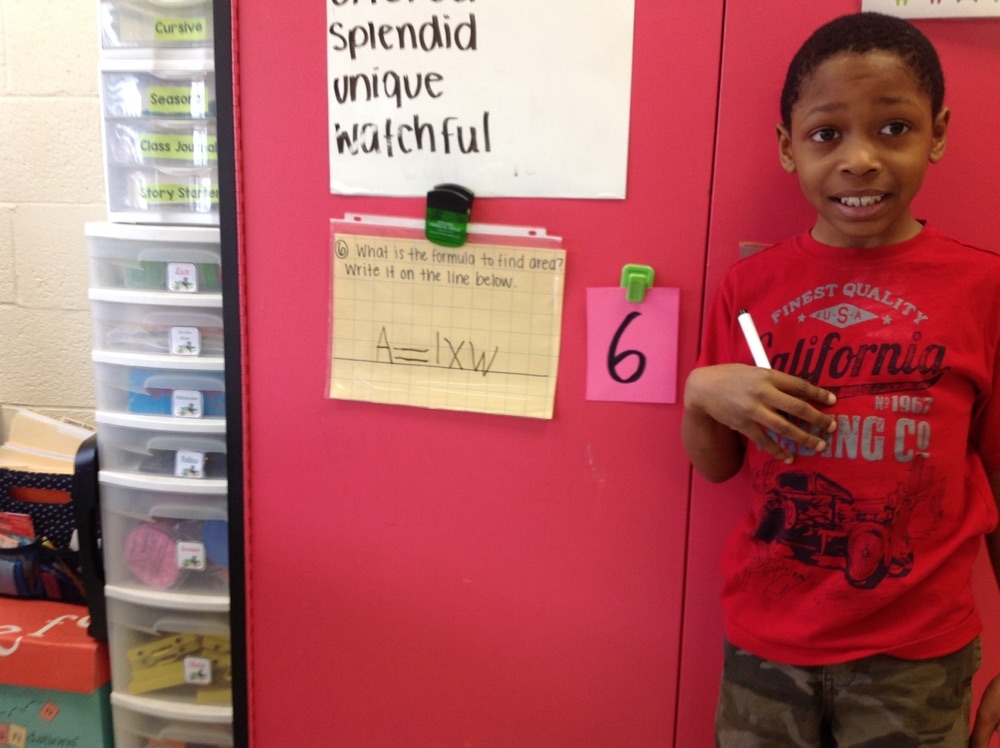


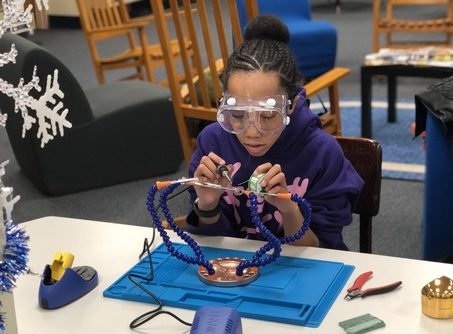 Critics of the school system point out that Kent County student scores on statewide achievement tests haven’t yet markedly improved. With a few exceptions (algebra, for example), they’re correct. But it’s also true that the school system is still in the early years of a transition to a dramatically different educational model—it will take another 8 years before graduating seniors will have used the digital platform throughout their school experience.
Critics of the school system point out that Kent County student scores on statewide achievement tests haven’t yet markedly improved. With a few exceptions (algebra, for example), they’re correct. But it’s also true that the school system is still in the early years of a transition to a dramatically different educational model—it will take another 8 years before graduating seniors will have used the digital platform throughout their school experience. Kent County school officials believe that tests scores will improve. They also point to the fact that teachers from outside the county, attracted by the digital platform, are increasingly applying for any vacancies—the Kent County public schools are becoming a magnet for educational talent, which will help under any educational model. Still another assessment comes from the founder of LearnLaunch in Boston—the country’s leading “Ed-Tech” accelerator—who told this reporter that “the Kent County schools are clearly among the top 10% of districts in the US in their adoption and use of these new educational tools.” In fact, Kent County is the lead county in Maryland in the use of a digital educational platform; Baltimore County has recently decided to begin a similar transition. Furthermore, the County’s recent acquisition of its own fiber network and its plans to ensure near-universal internet access to households with students means that students can take advantage of the digital platform and its growing universe of content evenings and weekends too.
Kent County school officials believe that tests scores will improve. They also point to the fact that teachers from outside the county, attracted by the digital platform, are increasingly applying for any vacancies—the Kent County public schools are becoming a magnet for educational talent, which will help under any educational model. Still another assessment comes from the founder of LearnLaunch in Boston—the country’s leading “Ed-Tech” accelerator—who told this reporter that “the Kent County schools are clearly among the top 10% of districts in the US in their adoption and use of these new educational tools.” In fact, Kent County is the lead county in Maryland in the use of a digital educational platform; Baltimore County has recently decided to begin a similar transition. Furthermore, the County’s recent acquisition of its own fiber network and its plans to ensure near-universal internet access to households with students means that students can take advantage of the digital platform and its growing universe of content evenings and weekends too.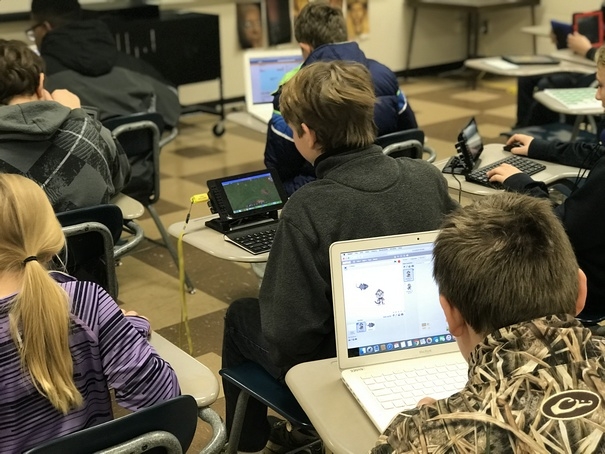 Discovery Education also provides the intensive off-site training for teachers as well as the coaches that help teachers with day-to-day use of the materials and tools. Teachers seem to love the tutorial sessions and they say that the company introduces them to a wide range of available tools (many new ones crop up every year), not just those made by Discovery Education. As a result, Discovery Education has become a clear leader in fostering the digital transformation of education—their content is now used in half of the k-12 classrooms in the U.S. and by some 50 million students overseas in more than 50 other countries. Tens of thousands of teachers across the U.S. are using these tools to prepare digital lesson plans, sharing them with each other online, and rating their effectiveness. Teachers in Kent County usually create their own digital lesson plans, but they can also—and do—choose from the best of those already on-line.
Discovery Education also provides the intensive off-site training for teachers as well as the coaches that help teachers with day-to-day use of the materials and tools. Teachers seem to love the tutorial sessions and they say that the company introduces them to a wide range of available tools (many new ones crop up every year), not just those made by Discovery Education. As a result, Discovery Education has become a clear leader in fostering the digital transformation of education—their content is now used in half of the k-12 classrooms in the U.S. and by some 50 million students overseas in more than 50 other countries. Tens of thousands of teachers across the U.S. are using these tools to prepare digital lesson plans, sharing them with each other online, and rating their effectiveness. Teachers in Kent County usually create their own digital lesson plans, but they can also—and do—choose from the best of those already on-line.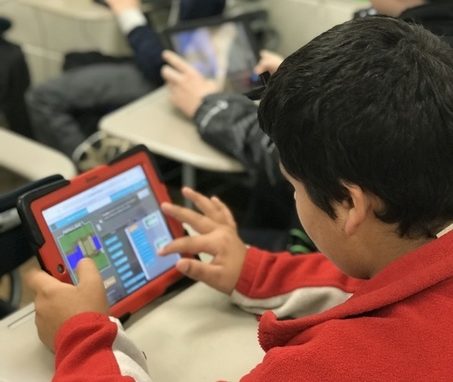 Kent County public schools are unique in expecting students to complete both a college-prep curriculum and a Career Technical Training (CTE) curriculum focused on practical skills, which more than 80 percent of students complete. Now the latter is being expanded to include information technologies. The schools already teach coding (programming digital devices) because, as Dr. Laura Jacob—the new head of technology for the school system—says, “programming is the next literacy.” Dr. Jacob has only been here since the summer, but already she serves on a committee that is establishing Maryland K-12 computer science standards. She also applied for and won a Google grant for Kent County (the only Maryland school district to win one) that is enabling 6th – 8th graders to learn more advanced programming and app development in bi-weekly after-school sessions. The students then work with local businesses to put those skills to practical use—micro-coding the controls for a fan at Dixon Valve was one of the first projects. A comparable program for high school students will focus on “ethical hacking”, helping organizations test their on-line security systems. These will be part of a new K-12 digital skills CTE curriculum that Jacob is organizing and that will culminate with an Advanced Placement computer science course for high school seniors.
Kent County public schools are unique in expecting students to complete both a college-prep curriculum and a Career Technical Training (CTE) curriculum focused on practical skills, which more than 80 percent of students complete. Now the latter is being expanded to include information technologies. The schools already teach coding (programming digital devices) because, as Dr. Laura Jacob—the new head of technology for the school system—says, “programming is the next literacy.” Dr. Jacob has only been here since the summer, but already she serves on a committee that is establishing Maryland K-12 computer science standards. She also applied for and won a Google grant for Kent County (the only Maryland school district to win one) that is enabling 6th – 8th graders to learn more advanced programming and app development in bi-weekly after-school sessions. The students then work with local businesses to put those skills to practical use—micro-coding the controls for a fan at Dixon Valve was one of the first projects. A comparable program for high school students will focus on “ethical hacking”, helping organizations test their on-line security systems. These will be part of a new K-12 digital skills CTE curriculum that Jacob is organizing and that will culminate with an Advanced Placement computer science course for high school seniors. The optical fiber network spanning Kent County—which will enable gigabit (1000 megabit) internet access to every County facility and to any home or business that wants it—is nearly complete. Despite rumors to the contrary, the fiber buildout is on schedule and on budget, according to FTS President Adam Noll. In fact, virtually the only part of the backbone network that remains to be built are the fibers serving the towns of Chestertown and Rock Hall. Noll says that construction of Rock Hall will begin in the next 2 weeks, now that plans of the existing underground utilities have been found.
The optical fiber network spanning Kent County—which will enable gigabit (1000 megabit) internet access to every County facility and to any home or business that wants it—is nearly complete. Despite rumors to the contrary, the fiber buildout is on schedule and on budget, according to FTS President Adam Noll. In fact, virtually the only part of the backbone network that remains to be built are the fibers serving the towns of Chestertown and Rock Hall. Noll says that construction of Rock Hall will begin in the next 2 weeks, now that plans of the existing underground utilities have been found.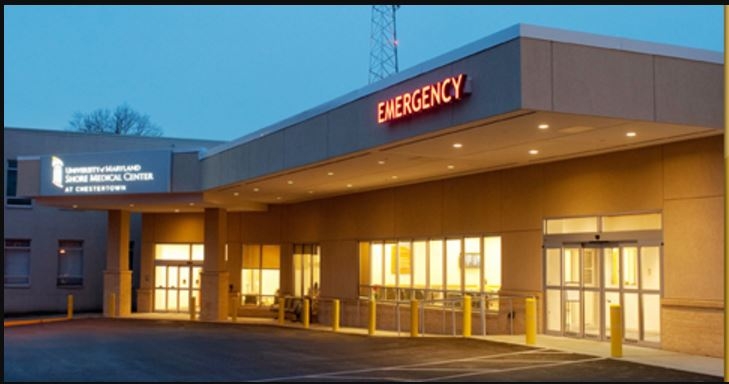
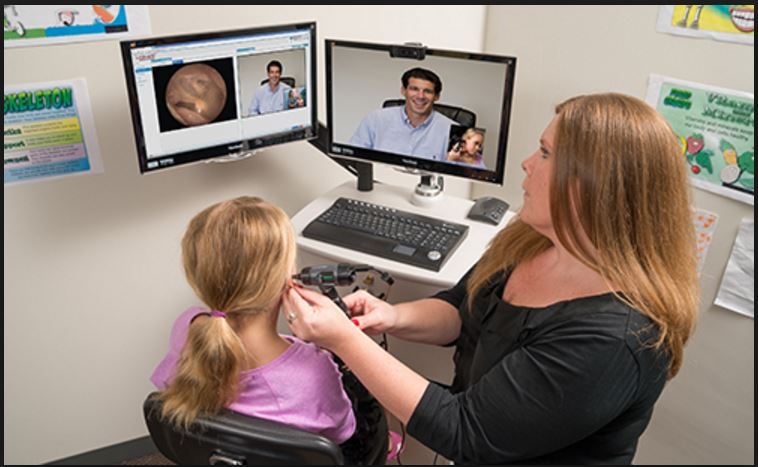 Telemedicine and Telehealth. Under the best of circumstances, however, it’s a hassle to drive across the bridge to consult a surgeon or a specialist not found on the Eastern Shore. Suppose instead you could talk to them over a video link from a local facility or, eventually, even from home? As it happens, Shore Regional Health is already gearing up for telemedicine services on the Eastern Shore, in part under a grant from the Maryland Health Care Commission. In April the first patient, a 22-month old boy brought to the emergency room at the Easton Hospital, was linked in minutes to a specialist at the University of Maryland Medical Center in downtown Baltimore—resulting in a diagnosis, immediate treatment, and referrals for followup. “Bridging the gap between the eastern and western shores is a wonderful opportunity that this technology has given us,” says Marc T. Zubrow, MD, vice president of telemedicine for the University of Maryland Medical System. “We will continue to enhance and expand the telemedicine capabilities [to] allow patients to receive the expert care they need without having to leave their local communities and support systems.”
Telemedicine and Telehealth. Under the best of circumstances, however, it’s a hassle to drive across the bridge to consult a surgeon or a specialist not found on the Eastern Shore. Suppose instead you could talk to them over a video link from a local facility or, eventually, even from home? As it happens, Shore Regional Health is already gearing up for telemedicine services on the Eastern Shore, in part under a grant from the Maryland Health Care Commission. In April the first patient, a 22-month old boy brought to the emergency room at the Easton Hospital, was linked in minutes to a specialist at the University of Maryland Medical Center in downtown Baltimore—resulting in a diagnosis, immediate treatment, and referrals for followup. “Bridging the gap between the eastern and western shores is a wonderful opportunity that this technology has given us,” says Marc T. Zubrow, MD, vice president of telemedicine for the University of Maryland Medical System. “We will continue to enhance and expand the telemedicine capabilities [to] allow patients to receive the expert care they need without having to leave their local communities and support systems.”